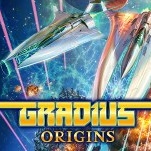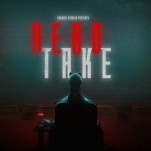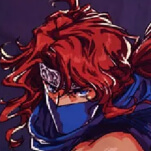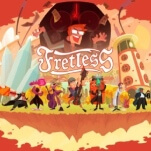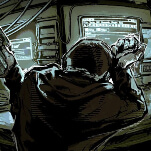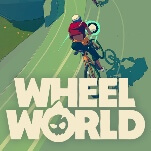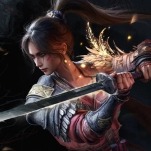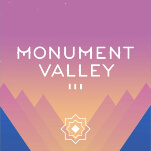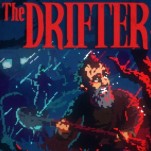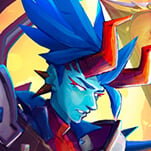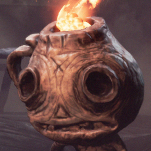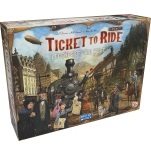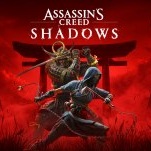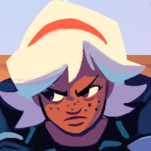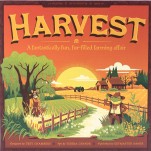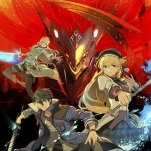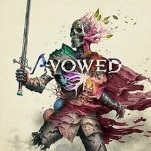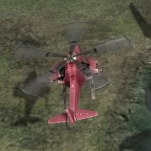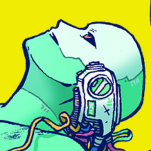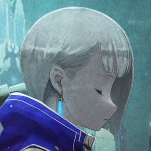Classic JRPG Homage Voice of Cards Has Nothing to Say

Voice of Cards: The Isle Dragon Roars has a pretty simple gimmick: The format and mechanics of a classic JRPG, filtered through the aesthetic of tabletop games. A misfit group of characters, including an ambitious hero, a mysterious monster, a stern witch, a muscle bound airhead, and a flighty elf go on a quest to slay a dragon. A GM speaks with a low baritone, describing events and reading dialogue aloud; there is no other voice acting. Card combinations make up plains, forests, mountain ranges, and battle scenes. Otherwise, it maintains a classic JRPG rhythm, alternating between towns, an expansive outside world, and dank dungeons. Its tactile aesthetic is completely charming and makes its familiar trappings feel new and vivid. Ultimately though, the game misunderstands what makes its inspirations so compelling and thus fails to either transcend its sources or serve as an effective throwback.
The game’s immediate charms are its relentless embracing of its limitations. It’s basically a “AAA” RPG Maker game. Rather than obscuring its roots under slickness, though, it actively embraces them. The vivid cards that make up the game’s towns and landscapes are repetitive, with stock cards for roads, forests, mountains, and plains that hardly vary from location to location. This is no down side, however. Its minimalism refocuses the player’s attention on the world’s design. The game’s environments are frequently labyrinthian as dungeons and fields alike are obscured by face down cards. As the party moves about the map, the cards within “line of sight” are flipped over. This gives exploring the world, at least at first, a mysterious edge. Not everything can be seen at once. The game frequently asks one to propel into the unknown, with only a direction to go by.
Otherwise, the cards are purely aesthetic. Though loading screens show a shuffling deck of cards, the game features no deck building or random environments. Instead the cards serve as an aesthetic backdrop for traditional, turn-based combat. Based on a speed stat, each party member can perform one action per turn. Those actions are further restricted by a crystal currency. More advanced abilities cost crystals and one crystal is added every turn. Much of the play is then managing saving up for powerful abilities, while keeping your party healed and eliminating enemies. The game also emphasizes classic conundrums like party competitions and elemental weaknesses. However, it is well reduced in complexity from similar RPGs. Every character in your party is limited to four active abilities at once. Leveling up grants new abilities, as well as passive buffs, but the limit to four at a time means that the game doesn’t branch out or expand in complexity. Without real restrictions on magic casting, as well as the game’s generous approach to items and healing, the careful resource gathering of Final Fantasy or Dragon Quest is totally absent. As a consequence, the game’s lengthy dungeons are inert, without any real tension.
The limitations of the systems is not the most serious problem. The throwback RPG could just be a frame to hang narrative around, an aesthetic marker to show off the game’s thematic ambitions. The problem is that the game is just flashy enough that it’s slow. The attack animations, reminiscent of Magic the Gathering: Arena or Hearthstone, are not nearly as snappy as those slick titles. At the start of every battle, the game loads in by laying down a battle mat, placing the aforementioned crystal currency, and then flipping over the cards that represent allies and enemies. To put it simply, everything takes a long time. It doesn’t help matters that the random encounter rate is frequent. (Though I wonder if the game would load faster on a PlayStation or on PC; I played on Switch.) JRPGs, especially now, gain potency through their speed. Voice of Cards is just too slight to make its slowdowns feel worthwhile.
-

-

-

-

-

-

-

-

-

-

-

-

-

-

-

-

-

-

-

-

-

-

-

-

-

-

-

-

-

-

-

-

-

-

-

-

-

-

-

-


